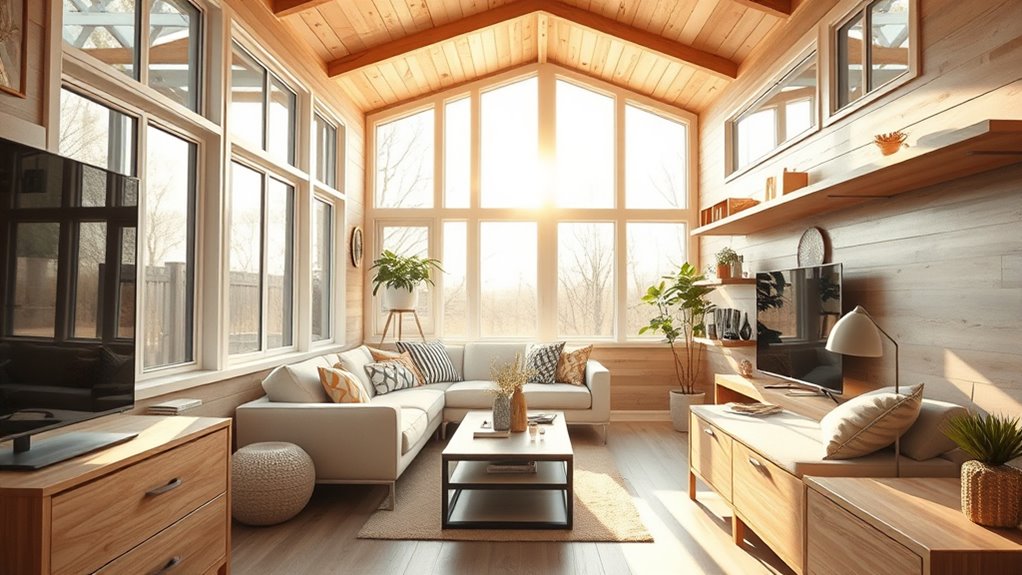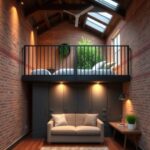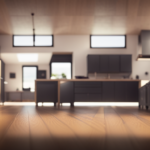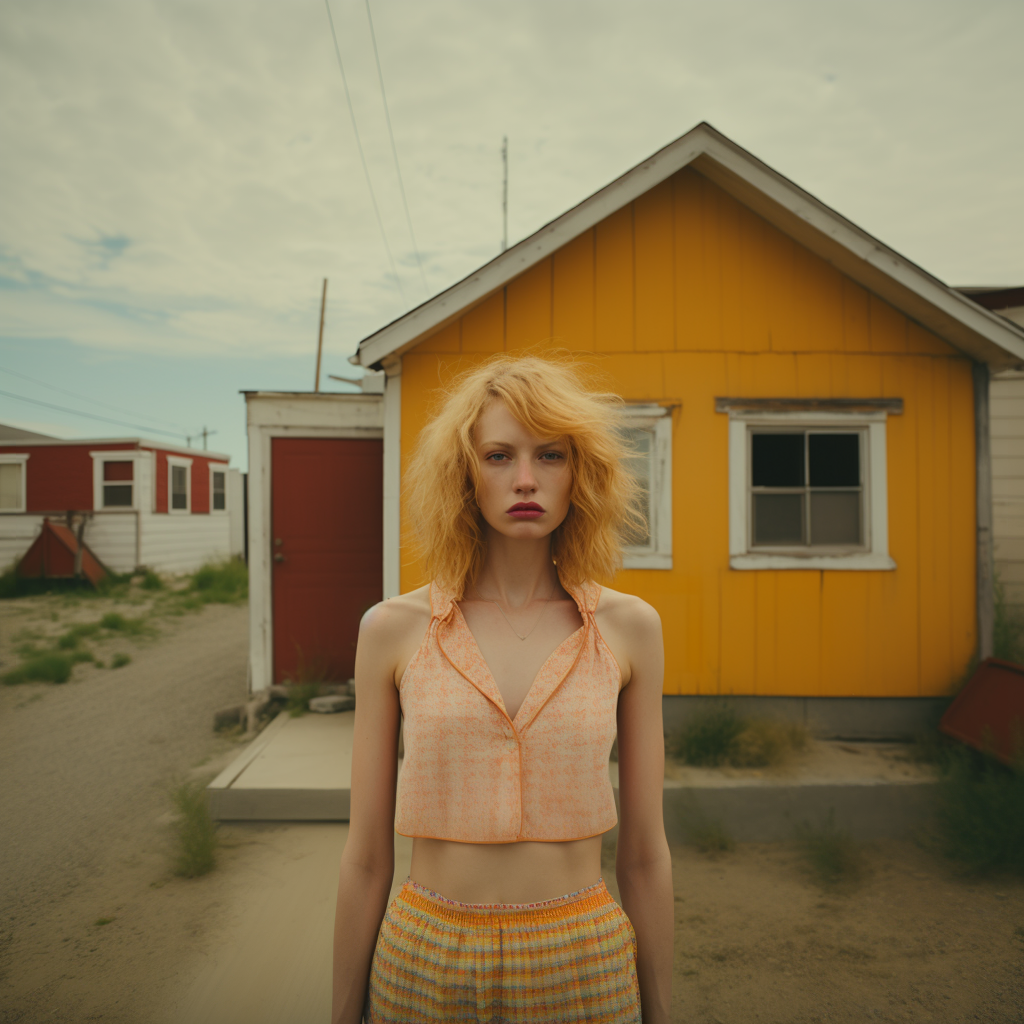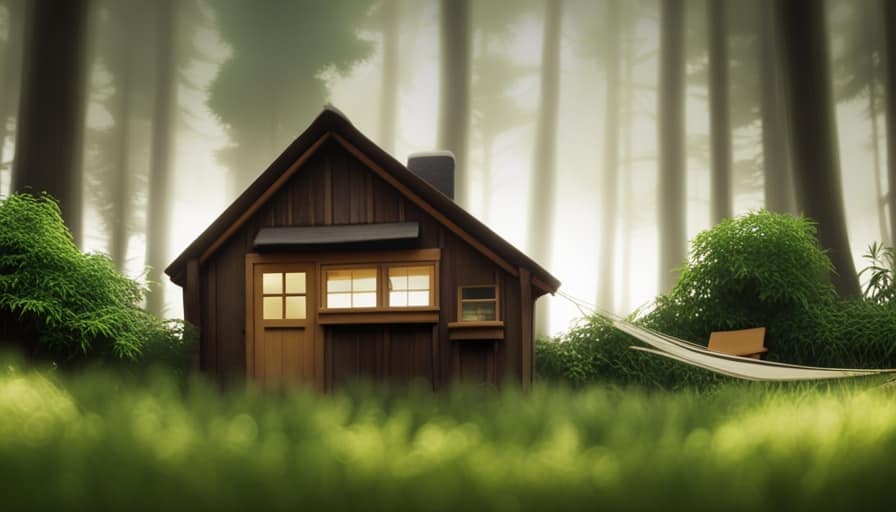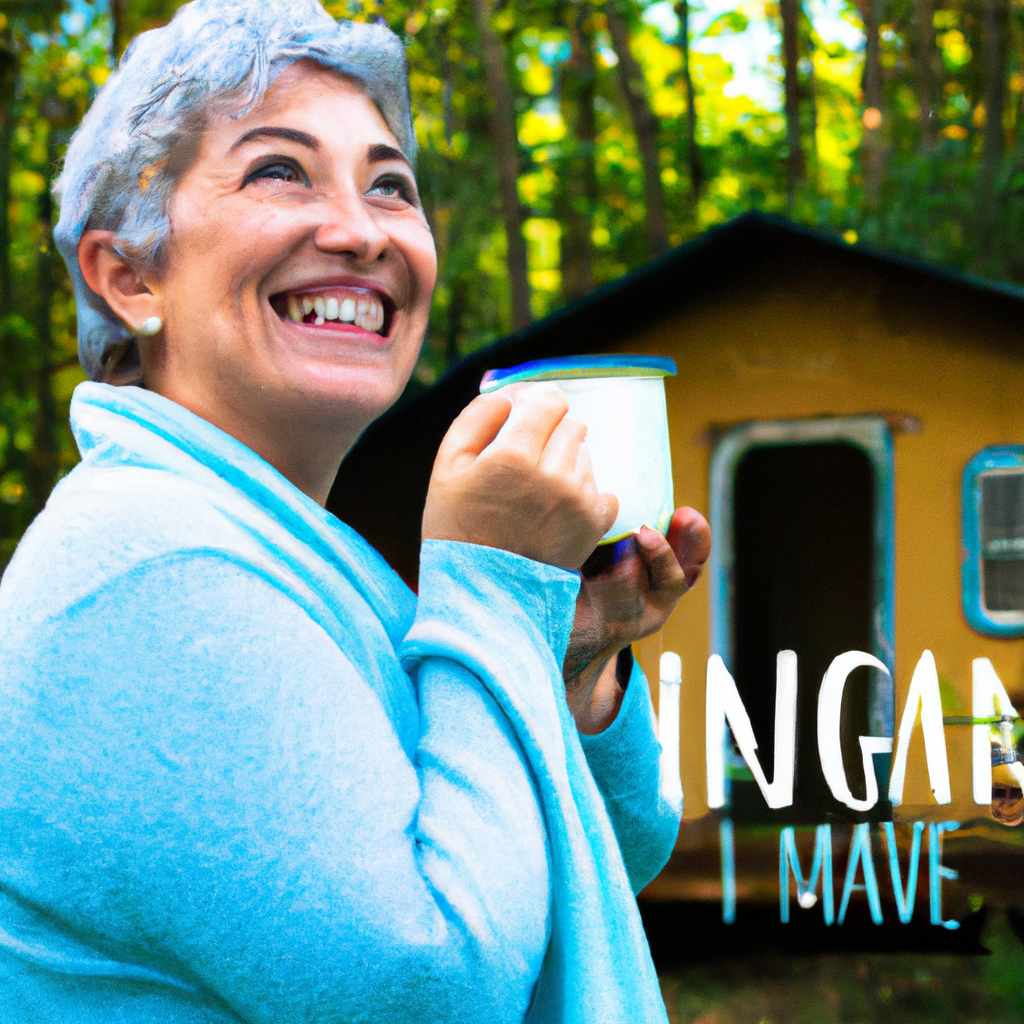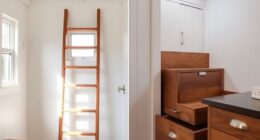Have you ever wondered why some tiny houses seem surprisingly spacious despite their small size? It turns out that how you design and arrange your space can trick your brain into perceiving more room than there actually is. From clever window placement to color choices, these subtle strategies make a big difference. Understanding the science behind this can help you create a more comfortable and open environment—if you’re curious, there’s more to discover about the psychology of small spaces.
Key Takeaways
- Strategic window placement and tall cabinets emphasize vertical space, creating a sense of openness.
- Light-colored walls and reflective surfaces bounce light, visually enlarging the interior.
- Clutter-free environments and smart storage solutions enhance perceived spaciousness.
- Design elements that draw the eye upward, like elongated windows, trick the perception of height.
- Understanding visual perception allows homeowners to choose features that make small spaces feel larger.
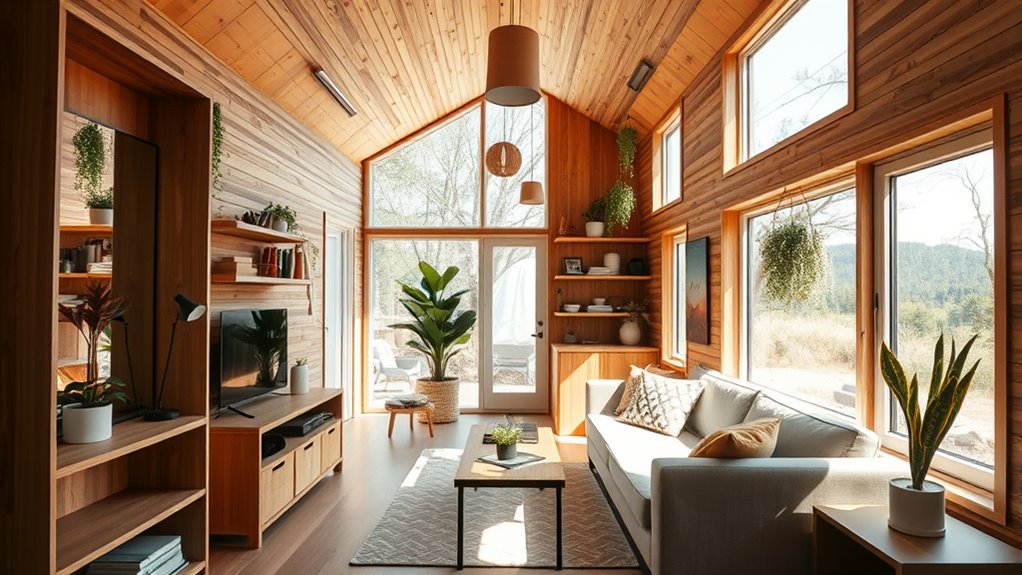
Tiny houses are more than just a trend; they’re grounded in science that explains their efficiency and sustainability. One of the most fascinating aspects is how they feel surprisingly spacious despite their small size. This sensation comes down to space perception—the way your mind interprets the environment—and its profound psychological impact. When you step into a tiny house, your brain processes the space differently than it would in a larger home. Clever design choices, like open floor plans and strategic placement of windows, help maximize your perception of openness. Instead of feeling confined, you often experience a sense of airiness and freedom, which is partly due to how your brain perceives the space around you.
Clever design tricks make tiny spaces feel open and liberating.
The psychological impact of this perception is significant. When a space feels larger, it can reduce feelings of claustrophobia and stress. Designers of tiny houses intentionally use visual tricks to enhance this effect. For example, vertical space is emphasized through tall cabinets or elongated windows, drawing your eye upward and creating the illusion of height. Similarly, light colors and reflective surfaces bounce light around the room, making it appear larger and more inviting. This manipulation of space perception helps you feel comfortable and relaxed, even in a small footprint.
Another key element is clutter management. Tiny houses often feature smart storage solutions that keep surfaces clear and maintain a tidy environment. When you eliminate clutter, your brain perceives the space as more open, which boosts your mood and mental clarity. The psychological impact of a well-organized tiny space can be surprisingly positive, fostering a sense of calm and control. This sensation is closely tied to the perception of spaciousness—when your environment is orderly, it feels bigger and less overwhelming. Additionally, understanding the science behind visual perception can help homeowners make more informed design choices to enhance their space.
Furthermore, the connection between interior design and psychological impact is supported by studies in environmental psychology. These studies show that a well-designed space, which considers how people perceive and emotionally respond to their environment, can improve overall well-being. Tiny houses capitalize on this principle by creating environments that feel larger than they are and promote positive feelings. So, it’s not just about saving space; it’s about crafting a psychological sanctuary that transforms how you experience your home. Through the science of space perception and understanding its psychological impact, tiny houses manage to feel expansive, comfortable, and surprisingly liberating, despite their compact size.
Conclusion
Did you know that strategic design tricks can make a tiny house feel up to 30% larger? By using light colors, vertical lines, and clever window placement, you can trick your brain into perceiving more space than there actually is. So, next time you feel cramped, remember that a few simple visual adjustments can boost your sense of openness and comfort, making your tiny house feel surprisingly spacious and inviting.
Hi, I’m Emma. I’m the Editor in Chief of Tiny House 43, a blog all about tiny houses. While tree houses are often associated with childhood, they can be the perfect adult retreat. They offer a cozy space to relax and unwind, surrounded by nature. And since they’re typically built on stilts or raised platforms, they offer stunning views that traditional homes simply can’t match. If you’re looking for a unique and romantic getaway, a tree house tiny house might just be the perfect option.
